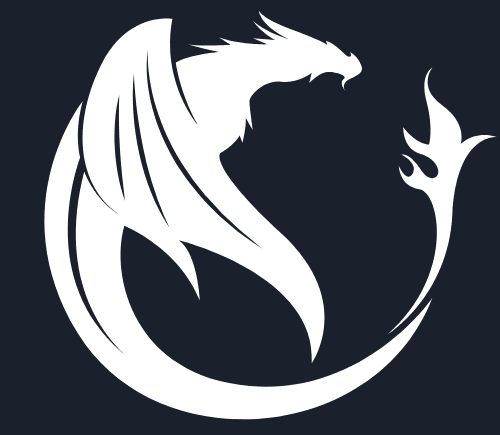5 Best Foods to Break a Fast, with Sample Diet Plans!
When you finish a fast, what you eat first can have a big impact on how your body reacts and heals. The process of reintroducing food after a time of fasting, known as “breaking a fast,” is equally important as the fast itself. Whether you’re fasting for health, weight reduction, or spiritual reasons, the meals you eat can either increase the benefits of your fast or induce discomfort and reduce your outcomes. In this blog, we’ll discuss the best foods to break a fast , how to gently and properly refill your body, guaranteeing a smooth and beneficial transition back to regular eating habits.
Table of Contents

The Importance of Breaking Your Fast Mindfully
Breaking a fast mindfully is important for a variety of reasons. When you fast, your digestive system rests, and your metabolic rate can change. Eating too much too quickly, or eating the wrong foods, might shock your system and cause discomfort such as bloating, gas, or other digestive problems. Mindful refeeding ensures that your body reaps the benefits of fasting while avoiding negative side effects. It entails listening to your body’s cues, eating slowly, and selecting foods that are easy to digest and nutrient-dense in order to restore your digestive system’s normal function.
Best Foods to Break a Fast
Simple and Clean Foods to Break a Fast for Fat Loss
Simple and clean foods are ideal for the first meals following a fast since they put less burden on the digestive system while increasing nutrient absorption. Initially, foods low in fat and fibre may be simpler to digest. Cooked veggies, broths and basic starches such as white rice or oatmeal are great options. These foods help to regulate digestion and blood sugar levels without overwhelming the digestive system.
Note: Never combine fats and carbs because carbs boost insulin and put you in an absorption mode, causing fat to be stored.
Lean Proteins for Sustained Energy
Lean proteins like chicken, turkey, fish, and tofu are ideal for breaking a fast because they include vital amino acids without a lot of fat, which can be difficult to digest. Protein is essential for tissue repair and immunological function, and it is especially critical following a fast. Including lean proteins in your first meals will assist retain muscle mass while also keeping you full and content, allowing for a more gradual and regulated reintroduction to your regular diet.
Bone Broth for Gut Health
Bone broth is a highly recommended dish for breaking a fast because of its calming effects and nutrient richness. It contains collagen, amino acids, and minerals, which can help mend and build the stomach lining. Consuming bone broth might be especially beneficial if you’ve been fasting because it hydrates and nourishes the body while being easy on your digestive system. Its warmth and simplicity of digestion make it a great first meal, reintroducing the stomach to the digestive process.
Nutrient-Dense Foods for the Second Meal
Following the first meal to break your fast, which is often light and easy to digest, the second meal can include more nutrient-dense meals to assist replenish and repair your body’s nutrient reserves. This meal should still be very simple on the digestive system, but it can begin to include a wider spectrum of macronutrients and micronutrients. Lean meats, whole grains, larger servings of vegetables, and healthy fats are all acceptable choices. The goal is to supply the body with a well-balanced mix of proteins, lipids, and carbohydrates to aid in recovery and energy levels.
Probiotics and Fiber-Rich Foods
Including probiotics and fiber-rich foods in post-fast meals can significantly improve digestion and gut health. Probiotics help to restore the equilibrium of intestinal bacteria, which can be upset during a fast. Foods rich in probiotics include kefir, sauerkraut, kimchi, and live-cultured yoghurt. Fiber-rich foods, such as beans, berries, and whole grains, can help regulate bowel motions, increase satiety, and lower blood sugar.
Yogurt: Benefits and Best Types
Yoghurt is a good food for breaking a fast because of its soft texture and therapeutic characteristics, which include probiotics that promote intestinal health. Choose plain, unsweetened yoghurt to prevent extra sweeteners. Greek yoghurt is especially advantageous because of its high protein content, which promotes muscle regeneration and satiety. For people who are lactose intolerant or vegan, plant-based options such as coconut or almond milk yoghurt, preferably with living cultures, can be a good substitute.
Whole Grains:
Whole grains provide an abundance of vitamins, minerals, fibre, and energy. When choosing whole grains, aim for less processed varieties like quinoa, brown rice, barley, and whole grain bread. These grains provide continuous energy and help to keep blood sugar levels steady, which is especially important after a fast because the body’s glycemic regulation is more sensitive.
Nourishing Snacks Between Meals
Nourishing snacks are essential for maintaining energy levels and avoiding overeating during future meals. Ideal snacks include:
Fruits: Best Options for Post-Fast
When choosing fruits to break a fast, look for ones that are high in water and nutrients but low in sugar. Berries, citrus fruits, and melons are great options. They include antioxidants, vitamins, and minerals while being easy on the digestive system. Avocado is another excellent choice, as it contains healthy fats, fibre, and important elements such as vitamin K, which promotes bone health.
Nuts and Seeds: Types and Benefits
Nuts and seeds are high in healthy fats, proteins, and fibre, all of which are necessary for the body to repair and feed itself after a fast. They also provide essential minerals and vitamins. Choose raw or dry-roasted versions that contain no additional salts or sugars. Snacks like almonds, walnuts, pistachios, chia seeds, and flaxseeds are delicious.
Smoothies: Recipes for Quick Nutrition
Smoothies are a wonderful method to get a range of nutrients in one, easy-to-digest meal. A well-balanced smoothie might contain a variety of leafy greens, a little bit of fruit for natural sweetness, protein (such as yoghurt or protein powder), and a healthy fat source like avocado or almonds. This mixture guarantees that you receive a diverse range of macronutrients and micronutrients without overwhelming your digestive system.
Meal Examples for Breaking Your Fast
When breaking a fast, it’s critical to reintroduce foods that are consistent with your nutritional goals and interests. The following are some meal samples adapted to specific nutritional demands, including muscle growth, keto/weight loss, and vegetarian/vegan diets. These meals are intended to be nutrient-dense and easy on the digestive system while also promoting your individual health goals.
First Meal Examples for Muscle Growth:
- Rice with Seaweed and lean Protein: Combine cooked rice (ideally brown or another whole grain variety for extra fibre) with iodine- and mineral-rich seaweed strips. Top with your choice of lean protein, such as grilled chicken, turkey, or fish. This meal contains a healthy amount of carbohydrates for energy and protein for muscle repair.
- Rice noodles with prawns. This dish is light but filling, ideal for post-fast sustenance. Rice noodles are gentle on the stomach, yet prawns include high-quality protein and vital omega-3 fatty acids, which are needed for muscle rehabilitation and overall health.
First Meal Examples for Keto/Weight Loss:
- Steak (beef or pork): A lean cut of beef or pig steak contains high-quality protein as well as critical elements such as iron and zinc, which are beneficial to muscle function and general recovery. This option promotes a low-carbohydrate, high-protein ketogenic diet.
- MCT Oil for Lean Fish: Drizzle MCT oil over grilled or baked lean fish, such as salmon or cod. MCT oil promotes ketone synthesis, which might be useful for people following a ketogenic diet, whilst lean fish delivers high-quality protein and omega-3 fatty acids without adding unnecessary calories.
First Meal Examples for Vegetarians/Vegans:
- Quinoa and berries: A dish of quinoa topped with a variety of berries provides an excellent source of plant-based protein and antioxidants. Quinoa is a complete protein, meaning it contains all of the essential amino acids, while berries add natural sweetness and are high in vitamins and fibre.
- Hummus and Tofu: Spread hummus on whole grain toast, then top with pan-seared tofu slices. This meal contains a healthy balance of protein (hummus and tofu) and complex carbs (toast), making it perfect for energy replenishment and muscle rehabilitation on a plant-based diet.
In Summary
Breaking a fast effectively is critical for reaping the health advantages of fasting while minimising discomfort. This guide provides tailored meal choices based on diverse nutritional needs and tastes. Rice with seaweed and lean protein, or rice noodles with prawns, are high-protein and carbohydrate meals advised for muscle growth. For individuals on a keto or weight reduction plan, lean steak or MCT oil poured on fish give high-quality proteins and fats that meet low-carb needs. Vegetarians and vegans can enjoy nutrient-dense meals such as quinoa with berries or hummus with tofu, delivering a balanced intake of plant-based proteins and important nutrients. These meal ideas are designed to assist ease the digestive system back into normal function after a fast, promoting overall health and specific nutritional goals.
Frequently Asked Questions
u003cstrongu003eAre eggs OK to break a fast?u003c/strongu003e
Yes, eggs are an excellent option to break a fast. They are rich in protein and healthy fats, which can help stabilize blood sugar levels and provide satiety.
u003cstrongu003eWhat not to eat after fasting?u003c/strongu003e
Avoid heavy, highly processed, sugary, or high-fat foods immediately after fasting. These can cause rapid spikes in blood sugar and may lead to digestive discomfort.
u003cstrongu003eDoes eating a banana break intermittent fasting?u003c/strongu003e
Yes, eating a banana will break an intermittent fast as it contains calories and natural sugars.
u003cstrongu003eIs cheese good to break a fast?u003c/strongu003e
Cheese can be part of a post-fast meal but it’s best consumed with other foods. It provides calcium and protein, but its high fat content might be heavy on an empty stomach if consumed in large amounts.
u003cstrongu003eIs yogurt good to break a fast?u003c/strongu003e
Yes, yogurt is a good option for breaking a fast, particularly plain, unsweetened yogurt. It’s easy on the stomach, provides probiotics to support gut health, and offers a good source of protein and calcium.







